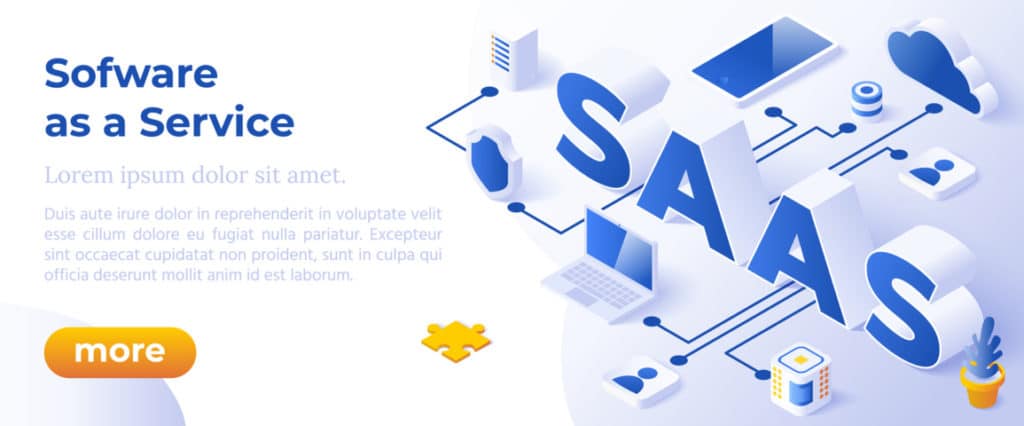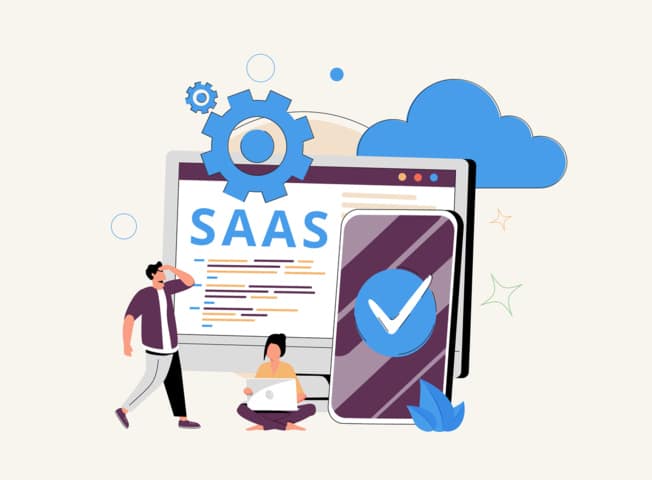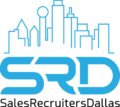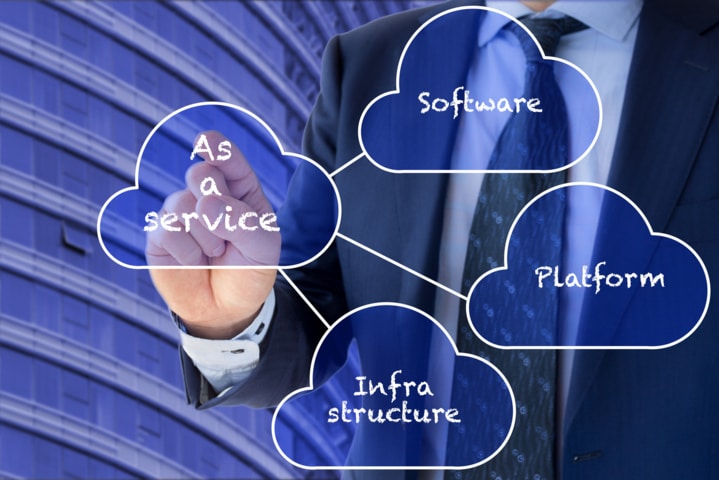Boost your SaaS sales with proven strategies! Learn how to effectively sell Software as a Service with expert tips and techniques.
Selling a service is different from selling a product. Products are tangible, which means customers can easily see, feel, and touch the things that they are paying for. They can also read the labels and examine closely what they are getting, such as the size, weight, color, and even smell of the item they are exchanging their money for.
On the other hand, with a service, customers have to experience it first before being able to gauge if the money they paid for was indeed worth it. Additionally, similar services from different providers have varying prices depending on the quality and expertise of the person doing the service, thus, making it more difficult to sell services to customers. Unlike product sellers who highlight and promote the features of their products, service providers should focus on the key benefits and solutions that their services can provide.
Then comes another category—Software as a Service (Saas). Do you sell it as a product, highlighting the features of the software? Or do you promote it as a service, focusing on the key benefits it provides your customers? In this article, we will discuss what SaaS is and how to sell it effectively to your target market. We will share different SaaS sales strategy tips and techniques that company owners, service providers, software creators, marketing and brand specialists, and sales representatives can use when selling SaaS.

What is Software as a Service (SaaS)?
Software as a Service (SaaS) is a business model in which software applications—or sometimes labeled as online tools, programs, and systems—are provided to users over the Internet on a subscription basis. In the SaaS model, customers pay for the monthly service of using a particular software for personal or business use. It is different from buying the actual software or computer program because customers don’t need to install or maintain the software on their local devices or servers. Instead, they access and use the software through their device’s web browser right away with the underlying infrastructure and maintenance managed by the SaaS provider or the company selling SaaS.
Examples of SaaS applications cover a wide range of industries and functionalities, including customer relationship management (CRM), enterprise resource planning (ERP), project management, human resources management, email and collaboration tools, and more. The most popular ones that people from all over the world use include:
- Spotify
- Apple Music
- Netflix
- Stan
- Dropbox
- Google Workspace (including Drive, Doc, Sheet, and Gmail)
- Xero
- Adobe
- Office 365
- Asana
- Shopify
- Zoom
- Microsoft
- HubSpot
- Oracle
- Canva
- Slack
- Asana
Key Features of SaaS: What Salespeople Need to Know
Whether you already have experience in how to sell SaaS or you’re just starting to explore the field of technology sales, it is important to know the key characteristics and features that make Software as a Service up. Below are some of these:
1. Subscription-Based
Users pay a recurring fee, typically on a monthly or annual basis, to access and use the software. This fee covers both the use of the software itself and the necessary infrastructure.
2. Cloud-Based Delivery
SaaS applications are hosted in the cloud, which means they can be accessed from anywhere and using any device as long as it is connected to the Internet. This eliminates the need for users to install, update, or manage the software on their local devices.
3. Multi-Tenancy
SaaS applications are designed to be multi-tenant wherein a single installation of the software can serve multiple team members from a single organization. However, each customer’s data and configuration are logically separated and secured to ensure that each user has a personalized view of their own dashboard.
4. Automatic Updates
The SaaS provider is responsible for maintaining and updating the software. Users automatically receive new features, enhancements, and security patches without needing to perform manual updates.
5. Scalability
SaaS applications can scale easily to accommodate growing numbers of users and increased usage. The underlying infrastructure is designed to handle fluctuations in demand.
6. Accessibility
Users can access SaaS applications from a variety of devices, including computers, smartphones, and tablets, as long as they have an internet connection and a compatible web browser.
7. Reduced IT Overhead
Since the software is hosted and maintained by the SaaS provider, users don’t need to invest in dedicated IT infrastructure or even an IT staff to manage the software. The SaaS company is responsible for updating the software, troubleshooting any issues, and providing support to each user.
SaaS has become increasingly popular due to its convenience, cost-effectiveness, and flexibility. It allows businesses of all sizes to access advanced software solutions without the complexities of traditional software deployment and maintenance.

The Importance of Having an Effective SaaS Sales Strategy
As we have mentioned earlier, your sales strategy should vary depending on the actual thing or element that you are selling—whether it’s a tangible product, a service, or, in this case, Software as a Service. Thus, it is important to design and execute an effective SaaS sales strategy if you want to successfully sell SaaS and profit from it. Here are some advantages you will gain from having a well-crafted and effective sales strategy for SaaS.
1. Competitive Advantage
In a rapidly evolving technology landscape, competition among SaaS providers is fierce. An effective sales strategy will help you stand out from the competition, especially if you are able to showcase your unique value proposition, highlight the benefits of your SaaS solution, and demonstrate how it addresses your customers’ specific pain points better than your competitors.
2. Revenue Generation
A well-executed sales strategy directly impacts your revenue generation. By effectively identifying, targeting, and nurturing potential customers, you increase your chances of converting leads into paying subscribers. A consistent stream of new customers combined with strategies to reduce churn will then lead to a steady revenue flow.
3. Market Penetration
Having a well-crafted SaaS sales strategy in place can also help you penetrate the market more efficiently. You can identify untapped segments, tailor your messaging to different buyer personas, and create specialized offerings that cater to specific industries or customer needs. This expands your reach and allows you to capture a larger share of the market.
4. Customer Education
Selling SaaS is not just about selling a product but also educating customers about your application’s features, benefits, and uses. A robust sales strategy, therefore, incorporates educational content, webinars, and demonstrations to help potential customers understand how your SaaS solution can solve their problems and improve their workflows.
5. Relationship Building
Built on establishing strong customer relationships, a successful SaaS sales strategy enables engaging with customers throughout their journey—from initial contact to post-sale support—, establishing trust and credibility. Happy customers are more likely to become your brand advocates where in they will refer others to your solution and even leave positive reviews about your brand or business.
6. Adaptation to Customer Needs
A dynamic sales strategy allows you to adapt to changing customer needs and market trends. By continually gathering feedback and analyzing customer behavior, you can refine your offering, add new features, and tailor your messaging to stay aligned with evolving customer preferences.
7. Churn Reduction
Retaining existing customers is just as important as acquiring new ones. Thus, aside from effective sales and marketing techniques, you should also have a solid strategy for post-sale customer support, onboarding, and regular communication to ensure that your customers are getting the most value from your SaaS solution. This reduces the likelihood of churn and increases customer lifetime value.
8. Scalability
As your SaaS business grows, your sales strategy needs to scale as well. An adaptable and scalable strategy can accommodate increased demand, handle larger volumes of leads, and support a growing customer base without compromising on customer experience.
9. Long-Term Sustainability
Implementing a well-crafted SaaS sales strategy contributes to the long-term sustainability and success of your business. By consistently meeting customer needs, delivering value, and fostering customer loyalty, you create a foundation for continued growth and success in a competitive market.
10. Employee Success
Ultimately, when the business grows, the employees involved in your SaaS sales strategies also succeed, including the software creator, tech specialists, marketing staff, and sales representatives. The success of your SaaS application can be part of their portfolio which can also contribute to their professional growth and development.
Thus, a well-crafted SaaS sales strategy is the backbone of your business’s success. It helps you effectively navigate the complexities of the SaaS market, build strong customer relationships, and drive revenue growth while staying adaptable to changes in technology and customer preferences.

Designing an Effective Sales Process for SaaS
Designing an effective sales process for SaaS requires a strategic approach that aligns with the unique characteristics of subscription-based software. The process typically begins with sales outreach and lead generation through targeted marketing efforts, aiming to attract potential customers interested in solving specific challenges. Once leads are captured, a consultative sales approach comes into play. Sales representatives engage with leads, understanding their pain points, and showcasing how the SaaS solution addresses these issues. Personalized product demos and free trials allow prospects to experience the value firsthand. The sales process should emphasize education, transparency, and value demonstration to guide leads through a seamless journey from awareness to conversion.
Automation tools and Customer Relationship Management (CRM) systems play a pivotal role in streamlining the SaaS sales process. These technologies facilitate lead tracking, personalized communication, and data-driven insights. As leads progress through the funnel, automation assists in sending timely follow-ups and educational content. The sales team can then focus on building relationships and providing tailored solutions, increasing the likelihood of conversions. By integrating these tools, SaaS companies can efficiently manage leads, optimize engagement, and capture valuable data to refine their sales strategies continuously.
Post-conversion, the sales process transitions into customer onboarding and success management. Effective onboarding ensures that customers quickly understand and maximize the value of the SaaS solution. Ongoing communication, training resources, and proactive support create a positive customer experience, reducing churn and enhancing customer lifetime value. Regular check-ins also provide opportunities for upselling or cross-selling additional features or plans based on evolving customer needs. An adaptive sales process that caters to the entire customer lifecycle is crucial in retaining customers and fostering loyalty, contributing to the sustained growth of the SaaS business.
Tips and Techniques in Selling Software as a Service (SaaS)
“How to sell Software as a Service?”
This is a common question among business owners that offer SaaS without a sales background, as well as non-technical salespeople who have no experience selling SaaS.
Whether you are the software developer responsible for creating the robust foundation of your SaaS business or a sales representative who is expected to sell a particular SaaS product, here are some practical sales tips and techniques that should help you become successful in SaaS sales.
1. Know your SaaS product by heart.
To be able to sell SaaS, it is essential that you know everything about it from the inside out. Here are a few guide questions that you should be able to answer about your SaaS before you can say that you’re ready to sell it.
- What does your software do?
- How can it help customers?
- What problems and challenges can it solve?
- What are the key features?
- How does it differ from similar software or service?
- How is it better than the competition?
- How does it improve workflows?
- Does it require upgrades?
- What are the pricing plans?
- What are the inclusions in each plan?
- Does it come with 24/7 support?
- Who can benefit most from it?
Therefore, you have to take time and exert extra effort to learn everything there is to know about your SaaS offering. For sales professionals, attend product training and demos to familiarize yourself with the service and how it works. Don’t be afraid to ask questions from the software creators and business owners if you have to clarify something about the product. Finally, if you can, ask for your own account so that you can explore the dashboard on your own and know the product you’re going to sell by heart.
Generally, it is so much easier to sell a product, service, or software if you have personally experienced using it.
2. Understand your target audience and potential users of the SaaS product.
One of the basic SaaS sales strategies you need to be aware of is identifying who your target users are. What do they do? Where are they from? What do they need your SaaS for? How can your product help them?
To do this, determine your ideal customer profile (ICP) and create detailed buyer personas for your target audience. Understand their pain points, challenges, and goals. By knowing the profile of your SaaS users, you can tailor your messaging and approach to resonate with them and their needs.
3. Define your value proposition.
Software as a Service is a fast-growing niche, and if you’re product and service are not unique, chances are, you already have dozens of competitors dominating the market. How do you sell your SaaS product then? How do you make your potential customers notice your brand?
Craft a clear and compelling value proposition that highlights the specific benefits your SaaS solution offers. Clearly communicate how your software addresses customer pain points and improves their workflows. Your goal as a sales professional is to make your offering stand out from the crowd so you get noticed by your target users.
4. Provide personalized demos and free trials.
We mentioned earlier that services are typically challenging to sell because, unlike products that customers can take home right away, they require personal experience first before customers see the value in them. Thus, to easily sell your SaaS solution or product, let interested customers experience it firsthand through free demos or trials. Take this opportunity to showcase how your software meets their unique needs.
Should sales prospects need more time to evaluate your software thoroughly, offer an extended trial period. Furthermore, ensure that the service you offer the trial users is the same as the paid ones, so they get to feel the support and assistance they will receive should they subscribe to your service.
5. Launch an educational content marketing campaign.
Let your audience know what your SaaS product is and how it can be useful to them through educational content. Create and share informative content that demonstrates your expertise and the value of your SaaS solution. Blog posts, webinars, videos, and whitepapers can help establish your authority and attract leads who are seeking solutions.
6. Consider a consultative selling approach.
Engage in consultative conversations with prospects. Listen actively and understand what their main challenges and needs are, ask probing questions, and offer solutions that align with their pain points. To gain the trust and confidence of potential customers, position yourself as a trusted advisor rather than just a salesperson. Offer valuable advice and present how your SaaS solution can help them simplify and streamline their processes.
7. Present clear pricing plans and packages.
Nothing is more discouraging than a vague pricing model that confuses or deceives customers. To avoid this, provide transparent pricing and subscription plans that cater to the unique needs of various customer groups. Clearly outline the features, benefits, and inclusions of each plan to help prospects make informed decisions.
8. Showcase real client feedback and use social proof to capture attention.
Feature customer testimonials, case studies, and success stories about your SaaS product. Social proof builds credibility and demonstrates how your service has positively impacted other businesses. Here are simple ways to help you acquire feedback from past and existing customers:
- Proactively request feedback from paid customers after one or two months of using your SaaS solution.
- Create a dedicated feedback page on your website and ask customers to fill it out.
- Send post-purchase surveys via email or use in-app or on-site pop-up surveys.
- Conduct phone or video interviews or ask customers to send video testimonials.
- Use online review platforms for public feedback, such as Google and Bing reviews.
- Monitor social media mentions and comments.
- Implement Net Promoter Score (NPS) surveys.
- Offer incentives for completing feedback surveys.
- Analyze customer usage patterns and behavior.
- Leverage chatbots for real-time feedback collection.
- Conduct annual or semi-annual customer satisfaction surveys.
- Collaborate with your customer success team for insights.
9. Make integration as seamless as possible.
It is easier to convince users to subscribe to your SaaS solution if they wouldn’t have to do any heavy lifting. A plug-and-play setup works effectively because, once paid, customers will simply just log in to their account and start using the system. Ensure that your SaaS solution integrates with other tools they commonly use.
By highlighting the ease of integration and the value it adds to their existing tech stack, customers can take action right away.
10. Provide comprehensive onboarding support.
Once your customer is ready to sign up, provide complete and extensive onboarding support and training so they can seamlessly adopt and use your SaaS solution.
11. Identify opportunities for upselling and cross-selling other products or solutions.
Knowing how to sell SaaS products is not just about dealing with new prospects. You also have to know when to upsell existing customers to higher-tier plans or cross-sell additional features that enhance their experience. Demonstrate how these upgrades add more value to their business.
12. Build long-term relationships.
Another key element in effective SaaS sales strategies is establishing and maintaining strong relationships with new and existing customers. To achieve this, foster trust and loyalty, maintain open communication, and always be available when the customers have any concerns or questions. Regularly check in with them to ensure they’re satisfied and to gather feedback for improvements.
13. Use analytics to gather data-driven insights.
Analytics data is very helpful in providing valuable insights about your SaaS solution and products. Use analytics tools to track customer interactions, engagement rates, and conversion metrics. Once data is available, use this to further refine your marketing, branding, and sales strategies.
14. Revisit your Saas sales strategies and campaigns and tailor them according to what works most effectively.
Review all the sales techniques that you and your sales team conducted over a period of time and identify which ones worked effectively in generating new customers and sales. Additionally, make sure to determine which ones did not work or provide any significant value to your SaaS business. Once clear, scale up the campaigns and techniques that can further grow your business.
By implementing these tips and techniques, you can enhance your SaaS sales efforts and build strong, lasting relationships with your customers.
Wrapping It Up: How to Be Successful in SaaS Sales
While selling Software as a Service (SaaS) is different from traditional selling of products or services, like any other sales strategy, it also requires a combination of creativity, sales skills, and technical knowledge in order to be successful. By following the tips and techniques we listed above, you can navigate the intricacies of SaaS sales with confidence and drive your organization toward growth and success.
If you are a SaaS business owner or a software creator looking for sales professionals who would represent your business to sell your SaaS solution to the market, we can help you find top sales talents in Dallas. At Sales Recruiters Dallas, we connect employers with sales professionals and fill their requirements for sales executives, managers, or entry-level professionals. Simply fill out this hire talent form to provide the information you need or contact us and let’s discuss requirements.

